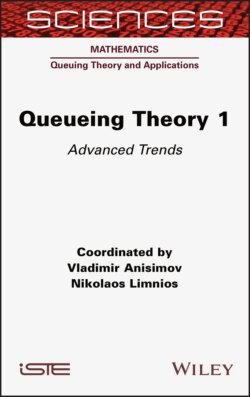Читать книгу Queueing Theory 1 - Nikolaos Limnios - Страница 26
1.5.1. A discrete time queueing model with bivariate geometric distribution
ОглавлениеIf we study a single-server queue in discrete time, with success of type 1 signifying an arrival and type 2 a service completion if there is a customer in the system, and letting a failure represent no event. Then keeping in mind that the event of having both type 1 and type 2 successes at the same time is zero, then our DTMC is
The system is stable if p < q. Letting the number in the system at steady state be X and defining with , then we have
Letting we end up with
Letting , we have
and
REMARK 1.4.– The bivariate geometric distribution is the discrete analogue of the bivariate exponential distribution. From the result of the mean number in the system, it is clear that by holding q constant and varying r, this mean is monotonically decreasing in the dependency in increasing convex ordering sense as expected. It is conjectured that this is also transferrable to the mean waiting time.
Let W be the waiting time in the system, i.e. the time spent waiting in the queue, plus the service time. If we define , then the waiting time distribution can be written as
